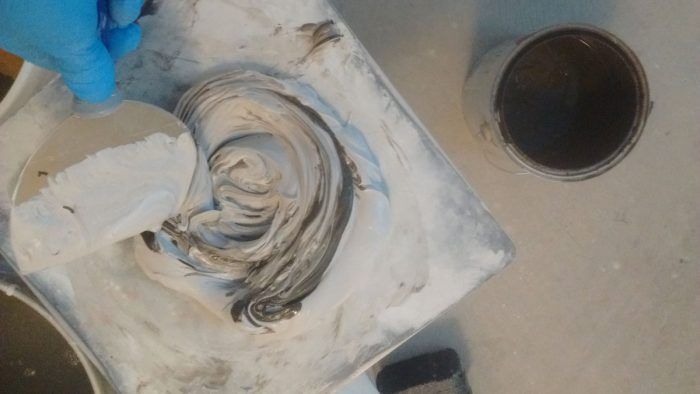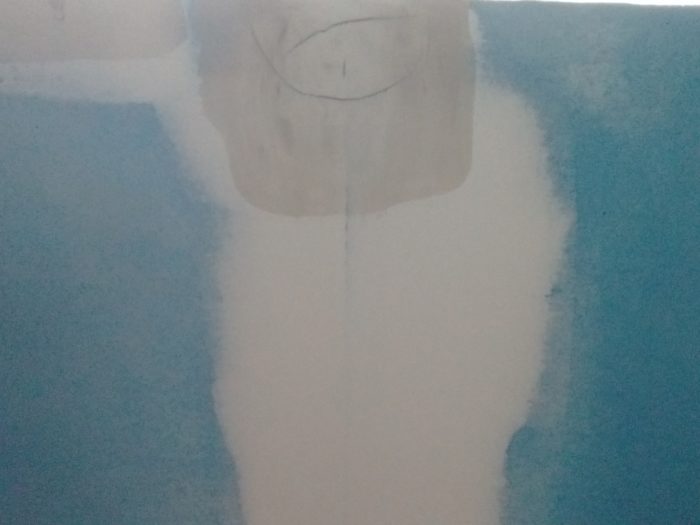A Trick for Spotting Drywall Compound Touch-Ups
Add a dab of latex paint to compound when making a patch, and it will be easier to spot when it comes time to sand everything smooth.

When working on a drywall finishing project, I look over the wall or ceiling for remaining defects using a bright light right after I’m done with my first pass of sanding. Air bubble holes, scratches, recessed nail fills, and other spots stand out when the light is held at an obtuse angle.
 After filling these imperfections, it can be tough to relocate them in order to feather them in with a quick sandpaper swipe. So to make them stand out, I mix a little latex paint—in this case, brown—in a scoop of compound on my hawk. The slight color difference highlights the touch ups and ensures that I sand every one before it’s time to prime and paint.
After filling these imperfections, it can be tough to relocate them in order to feather them in with a quick sandpaper swipe. So to make them stand out, I mix a little latex paint—in this case, brown—in a scoop of compound on my hawk. The slight color difference highlights the touch ups and ensures that I sand every one before it’s time to prime and paint.






View Comments
We have used chalk from a chalk line i same way.
I agree with blue chalk not latex paint. the latex makes it a bit rubbery & very hard to sand.
eply to Mannybuilder: I haven't had trouble with the compound being rubbery and hard to sand after tinting with latex paint. I use deep colors to tint and only use a tiny amount to color the compound. I can imagine a light color taking more paint in order to tint compound and in that case the compound would become rubbery.
I have been using Blue Line Chalk for 20 plus years. And I was taught that by my grandfather who had been doing it for probably 20 years prior. The problem we find with paint is it can absorb the first coat of primer differently than the rest of the finished wall and the cause paint flashes. It all depends on what the painter is going to use, most of the time you will have no issues but there can be problems.